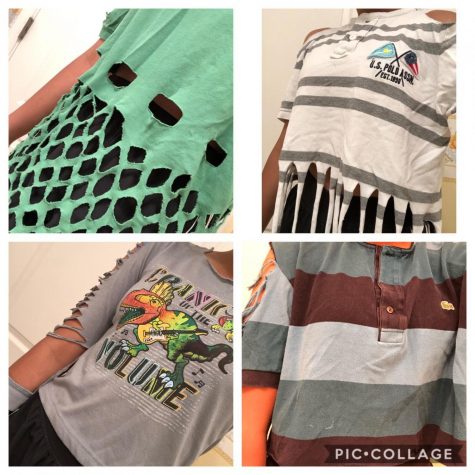Sustainability is in fashion
October 23, 2019
Despite the current surge of environmentalism, the conflicting concept of fast fashion is beginning to rise. While fast fashion and its users have been criticized, promoters for sustainable fashion must recognize that it’s so inaccessible that it’s virtually unreachable at this point, despite its necessity.
Environmental sustainability is defined by the U.S. EPA as “[creating] and maintain[ing] the conditions under which humans and nature can exist in productive harmony to support present and future generations”.
In other words, it means to secure a healthy, livable future for humanity.
One of the biggest hindrances to this is the fashion industry. According to the Bossier Magazine, it’s the third largest pollutant in the world, just after the oil industry, causing environmental harm with excess toxins, water, waste and energy.
Recognizing that all major threads of environmentalism connect to sustainable fashion is essential in furthering its benefits by making it more accessible.
This knowledge is why junior Aanya Arora loves to upcycle her clothes.
“I take clothes that don’t fit the way I want them to or don’t work with my style and either crop them or resew them,” Arora says. “I reuse it rather than buying new fabric and it’s more sustainable.”
Reusing clothes also prevents materialism and promoting brands, especially those without eco-transparency. The overreliance on new, trendy clothes makes it easy for many companies to leech money off of customers.
Brands are ordered by sustainability ranking using the Fashion Transparency Index whose standards are a research tool to help either support or pressure the right companies.
Despite the growing information, the toxic undertones of the fashion industry often go unrecognized due to their lack of disclosure, in spite of their detrimental nature, says nonprofit Remake.
The Global News says leather and denim are the most toxic materials due to the dyes they use; only one percent of the 1,600 chemicals used in the dying process are approved by the US Environmental Protection Agency, according to the Bossier Magazine.
And yet, trying to make materials more eco-friendly means a plethora of chemicals are needed for their production.
Take, for example, rayon, an animal-friendly alternative to silk. As said by the magazine Craftsmanship, the process to make it is so toxic that it’s banned from the U.S., and countries such as China and India that use rayon to reduce environmental harm become even more polluted in their efforts to be environmentally conscious, creating humanitarian consequences as well.
The toxins poison the veins of the Earth and wash up in rivers and oceans, effectively pulling the plug on massive ecosystems.
Clean water is essential to all life, and while this is the high tide for topics such as rising sea levels and environmental racism, the overwhelming consumption of water in unsustainable clothes is downright abhorrent.
On average, a “T-shirt uses 400 to 600 gallons of water to produce … [and] a pair of jeans uses 1,800 gallons of water”, according to the Global News. That’s equivalent to seven to ten full bathtubs and 6,800 one-liter bottles, respectively.
Majority of this overconsumption comes in the first stage of clothing production – the growing of cotton. The current lack of crop rotation prevents the natural cycle of nutrient usage, and the excess chemicals needed to replenish minerals in the soil end up in water during irrigation.
This toxic and chemically-infused water is thrown out and unusable. But even aside from water, textile waste is massive. China alone throws out 26 million tons of textile waste annually, according to magazine We Are Salt.
This is why sustainable fashion is needed — to fight against these ghastly misdemeanors. Dismissing these issues is harmful to every living being and being eco-friendly with clothing is simultaneously the most impactful yet hardest change to make.
The biggest problem against sustainable fashion is its price. By being so inadvertent in its economic classism, it prevents the general public from being educated and making a dent in individuals’ carbon footprints.
Triarchy, a denim brand, uses 85 percent recycled water; however, jeans start at $175. Although the initiative is admirable, the benefits of their business are greatly overshadowed by the hefty bill.

Freshman Anika Sharma’s upcycled clothes
Because everyone wears clothes, the fashion industry dominates in its control over the human population, thereby making it nearly impenetrable.
But by first establishing a personal definition of sustainability, each person can make an impact in their own way.
It also leads into more humanitarian and moral causes, such as fair trade and worker safety in less toxic environments.
Even though most solutions like biodegradable plastic and organic fibers aren’t the most accessible options for most people, researching transparency and traceability of brands gives a better idea on what sustainable fashion means for each person.
Reducing the environmental harms spurred on by the fashion industry is essential in curbing the effects of climate change, but that future will only be feasible if the sustainable fashion sector becomes more cost-friendly towards the general public.



